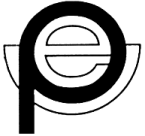

UNION OF NATIONAL EUROPEAN
PAEDIATRIC
SOCIETIES AND ASSOCIATIONS
|
|
Demography of Paediatric Renal Care in Europe: Organization and Delivery
Ehrich JH, Amina El Gendi A, Drukker A, Janda J, Stefanidis C, Verrier-Jones K, Collier J, Katz M.: Demography of Paediatric Renal Care in Europe: Organization and Delivery. Nephrol Dial Transplant. 2004 Jun 1
BACKGROUND: Members of the European Society of Paediatric Nephrology (ESPN)
initiated a study of the demography and policy of paediatric renal care among
European countries at the end of the 20th century. METHODS: A questionnaire was
mailed to the presidents of each of 43 national renal paediatric societies or
working groups in Europe. Data on each country's population, income as reflected
by its gross national product and infant mortality rate, were obtained from the
United Nations. The paediatric health care systems were previously divided into
three types: general practitioner care system, paediatric care system and
combined care system (CCS).
RESULTS: In 1998, 842 specialized paediatric nephrologists worked in hospitals
in 42 European countries. The median number of paediatric nephrologists per
million child population (pmcp) was 4.9 (range 0-15). The median number of
children served per paediatric nephrologist was significantly higher in
countries with the general practitioner care system than in those with the
paediatric or combined care system (CCS), namely 370 747 vs 169 456 and 191 788,
respectively. In addition to specially trained paediatric nephrologists, there
were 1087 paediatricians with a part-time interest/activity in paediatric
nephrology in hospitals in 34 European countries. Eastern European countries had
significantly more general paediatricians with part-time nephrological
activities than countries belonging to the European Union (EU), 16.7 vs 6.6 pmcp.
In 1998, 92% of 42 European countries offered paediatric dialysis facilities for
acute renal failure and 90% for chronic renal failure and 55% offered paediatric
renal transplantation (RTx). Only 30% of Eastern European countries (central
omitted) offered paediatric RTx vs 87% of EU countries. The availability of
paediatric RTx was associated significantly with the countries' gross national
product (r = 0.53, P<0.001). The median number of paediatric hospitals
offering dialysis for childhood chronic renal failure was 1.5 pmcp (range 0-5.0)
and the median number of paediatric hospitals offering paediatric RTx was 0.4
pmcp (range 0-3.5). Fewer children were on dialysis or were transplanted in
Eastern European countries than in the EU.
CONCLUSIONS: At the end of the 20th century, there was a marked variation in
delivery of paediatric renal care within Europe. This was related to factors
such as size of the population, geographical and political situation, the type
of primary paediatric care system and economic situation. European countries
were far from equal with regard to access of renal replacement therapy for
children. Improvement of the economic situation is beyond the capabilities of
paediatric nephrologists. However, in these days of world-wide globalization
paediatricians in greater Europe should be able to achieve better cooperation
and exchange of ideas and information which would be the first step towards
equality of renal care for children.
Proposal for
the UNEPSA web site and UNEPSA Newsletters (later v.s. EPA web site) | UNEPSA (EPA) missions and aims | Contacts,
UNEPSA Council |
Constitution of UNEPSA | Draft of EPA
(European Paediatric Association) | National Paediatric Societies
in Europe | Paediatric Subspeciality Societies |
Minutes of the UNEPSA General Assembly | Demography of Paediatric Primary Care (PPC) in
Europe